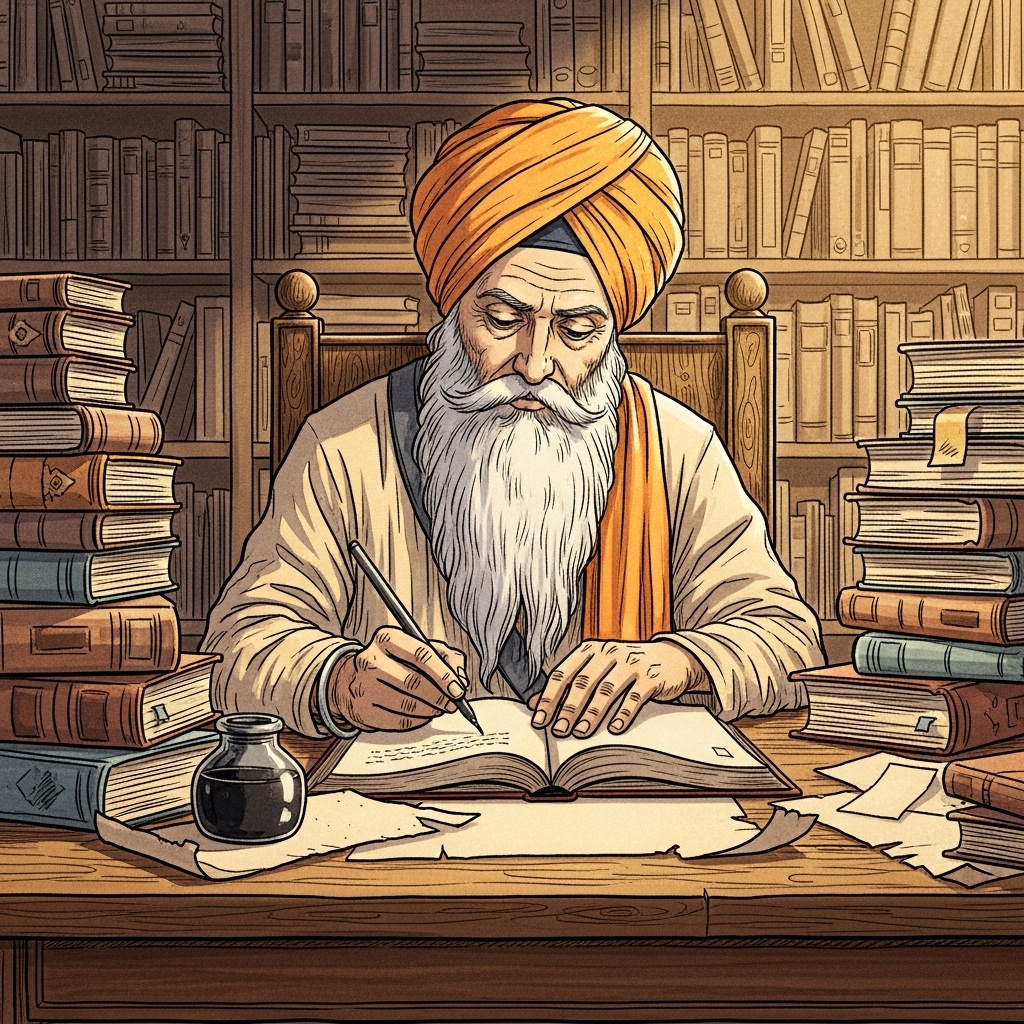📖 1977 — A Scholar's LegacyRemembering the life of Professor Sahib Singh, whose monumental work made Gurbani accessible to millions.

How do you make the infinite wisdom of the Gurus accessible to every single person? Professor Sahib Singh dedicated his life to answering that question. On this day, the Sikh world honored the passing of this intellectual giant. A humble schoolteacher by profession, he undertook the colossal task of creating a complete, grammatically precise translation and commentary of Guru Granth Sahib. The result was his ten-volume masterpiece, the Sri Guru Granth Sahib Darpan, a cornerstone of modern Sikh study. Professor Sahib Singh’s clear, methodical approach demystified the sacred text for millions, allowing them to engage with Gurbani (the Guru's teachings) on a deeper, more personal level. His work was a revolutionary act of selfless service, democratizing spiritual knowledge for generations to come. His life is a testament to the power of dedicated Seva (selfless service), proving that the pen can be a powerful tool for enlightenment and empowerment.
|